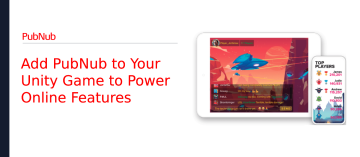
User-generated content (UGC) not only creates an authentic and engaging experience for players but helps drive player engagement as players will establish themselves as core members of a game’s longevity when they develop and use UGC. UGC can take various forms, such as custom maps, skins, mods, and other creative assets designed by players. Many popular games like Fortnite, Halo Forge, Minecraft, and Roblox have experienced immense success by embracing UGC, leading to high-quality content and increased player retention.
The rise of UGC in gaming has existed for years, driven by the need for more engaging and personalized experiences by players that are passionate about the game they are playing. Players crave authentic content and are more likely to participate in UGC campaigns if developers support this type of content. This has led to an increase in content marketing efforts focused on UGC to help drive brand awareness and foster social proof.
For players, UGC offers numerous advantages:
Fostering creativity by allowing them to express themselves through the creation of unique content.
Deepening user engagement with the game, which leads to increased player engagement and retention.
Extending the longevity of the game by providing new and diverse experiences.
Even if developers are unable to provide regular updates to games, players can repurpose existing content into new modes, games, and cosmetics.
For game developers and publishers, UGC offers significant benefits:
Promoting player retention by keeping users engaged with fresh content.
YouTubers and Twitch Streamers alike can help promote new UGC in their favorite games which allows for a cost-effective influencer marketing campaign. They can help excite existing and new potential players, helping to create strong testimonials to promote your game.
Create a welcoming, sticky community by providing the tools for players to create and share their UGC.
Participating in email marketing campaigns by sharing a list of content created by players the developers curate based on different events or themes.
Reducing the content creation load by leveraging the collective creativity of the player base.
Unity and Epic Games have recognized the potential of UGC by integrating marketplaces with their video game engines where users can share their content. This trend is likely to continue, with more game developers embracing UGC as an essential part of their marketing strategy and player engagement efforts.
Implementing UGC in Your Game
To successfully integrate user-generated content into your game and boost player engagement, you’ll need to consider how you want to include UGC as you develop or add to your game.
Planning for UGC: Identify the type of UGC that best fits your game. Consider the game's genre, target audience, and existing features to determine the most suitable content creator opportunities.
Building a UGC framework: Develop a system for accepting, moderating, and publishing UGC. This may include creating submission guidelines, establishing a review process, and setting up a platform for players to share their creations. Ensure that your UGC strategy aligns with your overall marketing goals and objectives.
Encouraging UGC creation: Motivate players to create content by offering incentives, tutorials, and community events. For example, you can organize contests with rewards, provide in-game bonuses, or highlight the best creations on your social media platforms or in-game community hubs.
Managing UGC: Implement best practices for handling user submissions, ensuring quality control, and promoting positive community engagement. Establish clear guidelines for acceptable content, and develop a moderation process to maintain a safe and respectful environment.
Monitoring and adjusting your UGC strategy: Use analytics and metrics to understand the impact of UGC on your game. You’ll want to track engagement rates, conversions, and retention, especially based on the UGC that you are promoting or see that is successful in your community. Adjust your strategy accordingly to optimize results and maintain a high-quality player experience.
Best Practices for Promoting UGC in Your Game
To maximize the potential of user-generated content in your game, follow these best practices for promotion and management.
Encouraging players to create content: Offer rewards, competitions, and other incentives to motivate players to contribute their own creations. This could include featuring top creators on your website or social media, providing in-game currency for submitting content or hosting contests with exclusive prizes.
Showcasing user creations: Curate exceptional UGC in your game and on your social media channels to inspire others to participate. Ensuring that you provide routine social media posts on platforms such as Twitter, TikTok, YouTube, Podcasts, or even your own forums can help drive player engagement and create a sense of community around your game.
Handling UGC disputes and issues: Establish clear policies and guidelines to ensure a safe and respectful UGC environment. Be prepared to address conflicts, copyright violations, and other issues that may arise.
Ensuring the quality and appropriateness of UGC: Implement a moderation process to review and approve submitted content. This helps maintain high-quality standards and ensures that user-generated content aligns with your game's brand and values.
The Future of UGC in Gaming
As technology continues to advance, the demand for authentic, engaging experiences from players will grow and UGC will play an increasingly significant role to satisfy these players.
Some potential developments and trends in UGC include:
Greater integration of UGC into game design: As developers recognize the value of player-created content, we can expect to see more games designed with UGC in mind from the outset.
Expansion of UGC platforms and tools: Research and investigate new tools, technologies, and platforms that allow for easier implementation of a UGC framework, as well as for players to be able to share their content.
Increased focus on community-building: UGC offers a unique opportunity for game developers to foster strong, loyal communities around their games. By promoting and supporting user-generated content, developers can encourage players to connect with one another and form lasting relationships.
Emphasis on user retention and engagement: UGC has proven to be an effective tool for keeping players engaged and invested in a game, leading to increased retention rates and overall success.
With the gaming industry constantly advancing, integrating user-generated content into the core of your game development and marketing strategy can position you at the forefront of this dynamic field, fostering the sustained expansion of your gaming community.
What's Next?
We’ve explored the importance of user-generated content (UGC) in the gaming industry and its potential to enhance player engagement and community-building. Although UGC has existed in games for many years, developers are continuing to see a rise in the popularity of UGC in gaming and its various forms, such as custom maps, skins, and mods. UGC provides unique opportunities for both players and game developers. For players, it includes increased creativity and deeper connections. For Developers, it lowers the content creation load and helps drive campaigns not that are cost-effective, and builds a community that is more sticky.
You’ll need to carefully plan how you want to build the framework for players to add their own content, as well as the best practices for how to manage and promote UGC as players develop content for your game.
For further information and resources on understanding and implementing UGC in your game, consider exploring the following links to see how other technologies and games have successfully integrated UGC:
By leveraging the power of UGC, you can create a more engaging, immersive, and successful gaming experience for your players, increasing long-term engagement.


